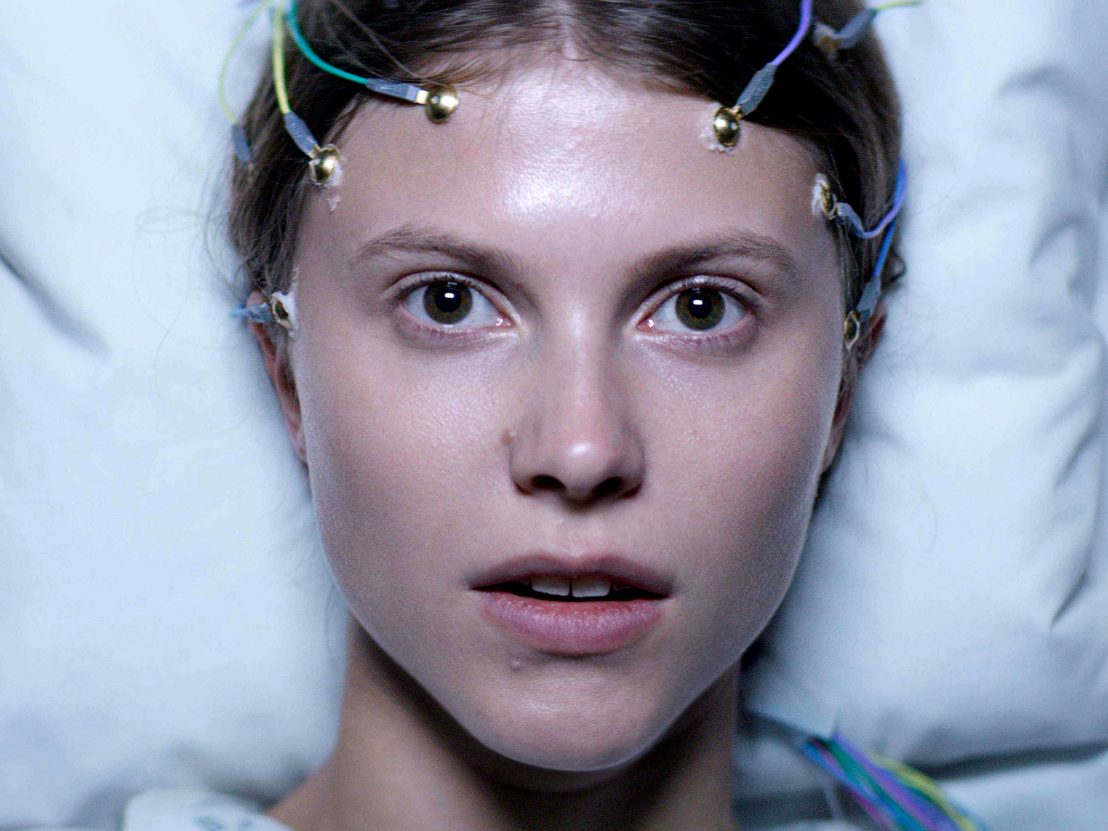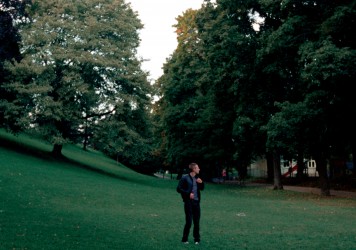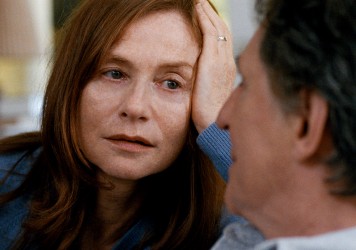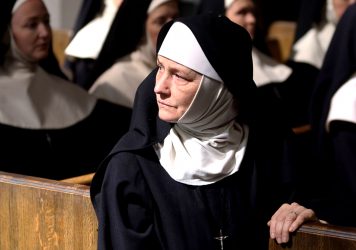
Something disturbing lies beneath the surface of Joachim Trier’s head-scratching latest.
To those intoxicated by the energy powering Joachim Trier’s first two features, Reprise and Oslo, August 31st, his fourth feature – a return to Norwegian-language filmmaking after 2015’s Louder Than Bombs – may present as bafflingly still. Thelma unfolds in the cold, slow forcefield of its cold, slow antiheroine. As in the frozen lake beside her family home, something disturbing lies beneath the surface of this film. Trier relies on this intrigue to sustain the viewer’s attention over 120 minutes.
To bludgeon our senses into knowing that all is not well with first year university student Thelma (Eili Harboe), Ola Fløttum’s electronic score drones across most sequences. Something is also amiss in the family dynamic. Father Trond (Henrik Rafaelsen) is peculiarly over-involved (he knows when Thelma makes a new friend on Facebook) while mother Unni (Ellen Dorrit Petersen) is embalmed beneath a sorrowful glaze.
The first indication of what’s wrong comes when Thelma has a seizure in a university study room – an event portended by a bird flying into a window and a “Hi” from beautiful fellow student, Anja (Kaya Wilkins). As she falls to floor, a wet patch spreads out on Thelma’s jean-clad groin. By the next scene her whole body is wet as she swims in a cavernous swimming pool. Anja enters the lonely space and kneels down on the pool edge to check on her wellbeing. The pair share loaded eye contact.
Aided by occasional flashbacks to Thelma’s girlhood, the narrative unfolds not so much in chunks of information but with slivers. Harboe gives a deliberately blank performance. Like Ryan Gosling in Drive, when asked a question she gazes before responding. It’s hard to get stuck into a character given little colour beyond her mystery affliction. In the absence of a personality, the camera drinks in her athletic prettiness through close-ups of her face and scenes where she, a loner, is the only moving force in the frame.
Only the introduction of Anja means she is less alone. The flip-side is Anja’s nearness incites sexual longing and this longing incites more seizures (psychogenic non-epileptic seizures as they are later diagnosed). Fantastical sequences indicate her mental abandonment: veins beneath the skin are lit up by electrical currents, glass shatters, a snake glides around a neck as a hand slides into pants.
The visuals are compelling but something is missing. The tone is too flat and the world-building too smooth for this film to ever come fully to life. Where it’s going is fascinating enough yet without an undercurrent of the human life caught in this horror, Thelma feels too stark an exercise. The film leaves us with its ideas on a theoretical level rather than a gut-wrenching one. The reveals open up a philosophical goldmine is but these shining offerings end up scattered on the surface. Trier’s first two films proved him a genius at rendering the heat of emotional intensity. One wonders why he has turned so cold.
Published 12 Sep 2017

Before you see Louder Than Bombs revisit director Joachim Trier’s haunting meditation on depression.

Jesse Eisenberg and Isabelle Huppert lead an impressive cast in Joachim Trier’s English-language debut.

Margaret Qualley plays a conflicted nun-in-training in this sensuous drama from director Margaret Betts.